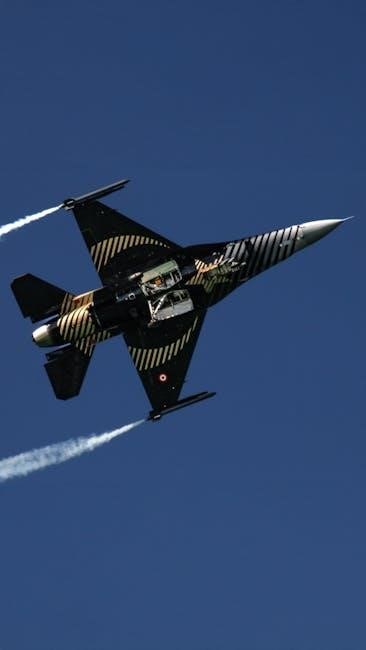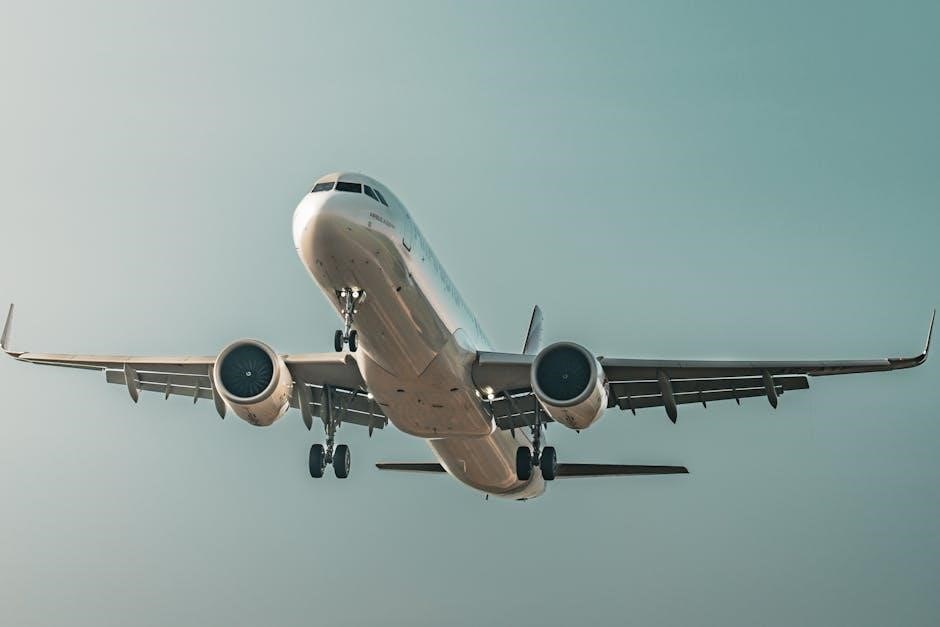
Welcome to the Holley Jet Size Guide, your comprehensive resource for optimizing carburetor performance. Proper jetting is crucial for achieving the perfect air-fuel mixture, ensuring maximum engine efficiency and power. This guide will help you understand the basics of Holley jets, how to select the right sizes, and how to adjust them for various conditions. Whether you’re tuning for street performance or racing, this guide provides essential insights to maximize your engine’s potential.
1.1 Overview of Holley Carburetors and Jetting Importance
Holley carburetors are renowned for their performance and tunability, with jetting playing a critical role in delivering the right air-fuel mixture. Properly sized jets ensure optimal fuel flow, preventing lean or rich conditions that can harm performance and engine health. Understanding Holley carburetors and their jetting systems is essential for maximizing power, efficiency, and reliability in various applications, from street driving to competitive racing.
1.2 Why Jet Size Matters for Performance
Jet size directly impacts engine performance by controlling fuel flow. Properly sized jets ensure the ideal air-fuel mixture, maximizing power and efficiency. Too small a jet restricts fuel, causing lean conditions and potential engine damage. Too large a jet enriches the mixture, reducing performance and fuel efficiency. Correct jet sizing optimizes throttle response, horsepower, and prevents damage, ensuring your engine runs smoothly and at its best.

Understanding Primary vs. Secondary Jets
Primary jets control fuel flow at lower RPMs, while secondary jets manage fuel flow at higher RPMs. Both are essential for optimizing performance across the entire power range.
2.1 Role of Primary Jets in Fuel Flow
Primary jets regulate fuel flow during low RPM and light throttle conditions, ensuring proper air-fuel mixture for smooth operation. They are crucial for part-throttle performance, affecting fuel efficiency and engine smoothness. Properly sized primary jets prevent lean or rich conditions, ensuring optimal combustion and power delivery at lower engine speeds.
2.2 Function of Secondary Jets at Wide-Open Throttle
Secondary jets control fuel flow at wide-open throttle (WOT), delivering additional fuel to meet high RPM demands. They ensure the engine receives sufficient fuel for maximum power output, preventing lean conditions that can damage the motor. Properly sized secondary jets are essential for peak performance and durability during high-load operation. They work in tandem with primary jets to optimize fuel delivery across the RPM range.

Choosing the Correct Jet Size
Selecting the right jet size involves understanding your engine’s specifications, operating conditions, and performance goals. Factors like horsepower, altitude, and temperature influence jetting needs. Always start with stock sizes and fine-tune based on testing and performance feedback. Proper jetting ensures optimal fuel flow, preventing lean or rich conditions.
3.1 Factors Influencing Jet Size Selection
Jet size selection depends on engine specifications, operating conditions, and performance goals. Factors include horsepower, cubic inches, compression ratio, and camshaft profile. Altitude and temperature also play a role, as they affect air density and fuel flow. Additionally, fuel type, ignition timing, and vehicle modifications like superchargers or nitrous oxide systems influence jetting requirements. These factors must be considered together to ensure optimal engine performance.
3.2 How to Determine Jet Size Based on Engine Specifications
To determine the correct jet size, start with Holley’s stock recommendations for your specific carburetor model. Consider your engine’s horsepower, cubic inches, and intended use. For example, a 600 CFM carburetor on a street engine might use smaller jets than the same carburetor on a racing engine. Adjustments are typically made in increments of 2-4 jet sizes based on testing and performance feedback.
The Impact of Altitude and Temperature on Jetting
Altitude and temperature significantly affect jetting by altering air density and fuel flow. Higher altitudes may require smaller jets, while temperature changes can influence mixture richness. Proper adjustments ensure optimal performance.
4.1 Adjusting Jet Sizes for High Altitude
At high altitudes, lower air density reduces oxygen levels, requiring smaller jet sizes to maintain the correct air-fuel mixture. Failing to adjust can lead to a rich mixture, decreasing performance and efficiency. Typically, jet sizes are reduced by 2-4 increments for every 1,000 feet of elevation gain. Smaller jets ensure proper fuel flow, preventing over-rich conditions and optimizing engine performance in thinner air conditions.
4.2 Temperature Effects on Fuel Flow and Jetting
Temperature significantly impacts fuel flow and jetting. Cold temperatures increase fuel viscosity, potentially reducing flow, while heat can lead to fuel evaporation, causing a lean mixture. At higher temperatures, slightly smaller jets may be needed to prevent lean conditions. Conversely, in colder climates, ensuring proper fuel flow is critical. Always adjust jets to maintain the optimal air-fuel ratio for your engine’s performance and efficiency.

Holley Jetting Recommendations and Factory Settings
Holley factory settings provide baseline jetting configurations for specific carburetors. Stock jets like 72 primary and 87 secondary are common, ensuring optimal performance for most applications. Adjustments may vary based on engine setup and tuning needs.
5.1 Stock Jet Sizes for Common Holley Carburetors
Holley carburetors come with factory-recommended jet sizes tailored to specific models. For instance, the Holley 4150 800 CFM Marine carburetor is factory jetted with 72 primary and 87 secondary jets. Similarly, the Ultra HP series often features stock jet sizes slightly larger for high-performance applications, while the Street Avenger series may use smaller jets for fuel efficiency. These settings provide a baseline for optimal performance across various engines.
5.2 When to Deviate from Factory Jetting
Factory jetting is a baseline, but modifications like engine upgrades, altitude changes, or performance enhancements often require adjustments. If you notice poor performance, decreased efficiency, or engine issues, consider deviating from stock settings. Upgrading to high-flow intake systems or performance cylinders may also demand recalibrated jetting. Always consult a Holley jetting chart or seek expert advice to ensure optimal tuning for your specific setup.

Tuning and Testing Jetting Combinations
Systematically test jet sizes using dyno sessions or real-world driving. Monitor performance, fuel efficiency, and engine conditions to refine your jetting setup for optimal power and reliability.
6.1 Step-by-Step Guide to Testing Jet Sizes
Start by installing the selected jets and ensuring proper installation. Conduct a series of test runs under varying conditions, such as acceleration and steady cruising. Monitor engine performance, fuel efficiency, and exhaust conditions. Use tools like a dyno or stopwatch to measure improvements. Adjust one jet size at a time to isolate effects. Document results to refine your setup accurately and efficiently for optimal performance.
6.2 Troubleshooting Lean or Rich Conditions
Identify lean or rich conditions by monitoring engine performance and spark plug appearance. A lean condition may cause high exhaust temperatures, while a rich condition can result in sooty plugs. Adjust jet sizes incrementally, increasing for lean or decreasing for rich conditions. Fine-tune air bleeds if needed. Always test adjustments under load and monitor improvements. Regular spark plug checks ensure accurate diagnosis and optimal engine performance.
The Relationship Between Jets and Air Bleeds
Jets and air bleeds work together to fine-tune the air-fuel mixture. Air bleeds influence fuel flow, allowing precise adjustments for optimal performance. Proper sizing ensures balanced combustion.
7.1 How Air Bleeds Affect Fuel Flow
Air bleeds play a critical role in modifying the airflow and fuel mixture within the carburetor. By controlling the emulsion, they influence the air-fuel ratio at various engine speeds. Properly sized air bleeds ensure the mixture remains consistent, preventing lean or rich conditions. Adjusting air bleeds fine-tunes performance, optimizing combustion efficiency and power delivery across the RPM range.
7.2 Adjusting Air Bleeds for Optimal Performance
Adjusting air bleeds requires precision to achieve the ideal air-fuel mixture. Start by assessing engine performance under various loads. If the mixture is too lean, increase the bleed size to add more fuel. Conversely, reduce the bleed size for a leaner mixture. Testing under real driving conditions ensures accurate tuning, enhancing both power and efficiency. Always use genuine Holley components for consistent results.

Holley Jet Size Charts and Drill Sizes
Holley jet size charts link jet numbers to specific drill sizes, simplifying tuning. For example, jets 80-82 correspond to a .093 drill, while 88-90 use .104. Always refer to official Holley charts for precise conversions, ensuring optimal performance and fuel flow accuracy.
8.1 Interpreting Holley Jet Drill Size Charts
Holley jet drill size charts map jet numbers to specific drill diameters, enabling precise tuning; For instance, jets numbered 80-82 correspond to a .093″ drill, while 88-90 use a .104″ drill. These charts help users match jet sizes to their engine’s needs, ensuring proper fuel flow. Always reference Holley’s official charts for accuracy, as variations in drill sizes can significantly impact performance. Proper interpretation is key to achieving optimal engine efficiency and power.
8.2 Converting Jet Numbers to Drill Sizes
Holley jet numbers are directly tied to specific drill sizes, crucial for accurate tuning. For example, jets 80-82 correspond to a .093″ drill, while 88-90 match a .104″ drill. Always refer to Holley’s official charts for precise conversions to ensure correct fuel flow. 3-digit jets offer tighter tolerances, providing finer control over fuel delivery, which is vital for optimizing engine performance and achieving the desired air-fuel mixture for your specific application.

Advanced Jetting Techniques
Explore expert methods for fine-tuning Holley jets, including power valve adjustments and specialized jetting for racing or high-performance applications. These techniques optimize fuel delivery for maximum power and efficiency, tailored to specific engine demands and operating conditions, ensuring peak performance across various driving scenarios.
9.1 Using Power Valves to Fine-Tune Jetting
Power valves play a critical role in optimizing jetting by controlling fuel flow during wide-open throttle. By adjusting the power valve’s metering holes, you can fine-tune the air-fuel mixture, ensuring the right amount of fuel is delivered for peak performance. This technique allows for precise calibration, enhancing engine efficiency and power output without compromising drivability. Proper power valve tuning is essential for achieving the perfect balance in fuel delivery.
9.2 Jetting for Specific Racing or Performance Applications
Jetting for racing or performance applications demands precise tuning to optimize power and efficiency. Factors like engine specifications, altitude, and fuel type significantly influence jet size selection. Experimentation with different jet sizes and configurations is often necessary to achieve peak performance; Always test under race conditions and consult Holley’s specific resources for your application to ensure the best results.
Proper jetting is vital for optimal engine performance. Always follow best practices, test thoroughly, and consult resources for specific applications. Happy tuning!
10.1 Best Practices for Maintaining Proper Jetting
Always start with Holley’s factory-recommended jet sizes and test under various conditions. Document changes and their effects on performance. Regularly clean and inspect jets to ensure optimal fuel flow. For fine-tuning, consult Holley’s official guides or seek expert advice. Monitor engine performance closely, using tools like O2 sensors or spark plug readings, to identify lean or rich conditions and adjust jets accordingly.
10.2 Resources for Further Learning
For deeper understanding, explore Holley’s official website and tech support for detailed guides. Forums like Dynotunenitrous.com offer jetting calculators and expert advice. Books by renowned tuners and online tutorials provide hands-on insights. Additionally, YouTube channels and specialized automotive websites share real-world applications and troubleshooting tips. Engage with communities like Holley forums for personalized advice and stay updated with the latest tuning techniques and best practices.




